Edward Burtynsky | Manufactured Landscapes @ the Film Forum | NYC.
—-
Beautiful ugliness.
I’ve made some notes about the idea of beauty, in ugliness, before.
Ugly beauty. You know that concept — the swirls of rainbowed oil twirling in water; unending mining excavations that somehow bespeak an otherworldly coolness; fabulous factory landscapes and interior gloom; the roughage of civilization routed to oblivion (the gorgeous up-ending chaos of Katrina — and the patina of the after-effects), the dissolute abandonment of Chernboyl — and what happens to cultured things when they are simply left alone. Forever. Or Michael Easton’s tarnished imagery of Habana, Cuba — where the brilliance of another brightly colored, tropically luxuriant (rich!) life finds itself dampened, moldering — yet beautiful — in an impoverished sentiment of care.
Like the raku of the zen master potters, the smoothed, oiled hand tools of the rice farmers — there’s a sweet glazing that implies the rustic utility, the aging sense of useful distressing — things once new, now old. More beautiful, in the distressing of time. Ravaged, revised, beauty. And that’s part of the tenet of Ed Burtynsky’s thinking — it’s an intentional revision. And our part in the web of acquisition seamlessly enwraps our connection to it all.
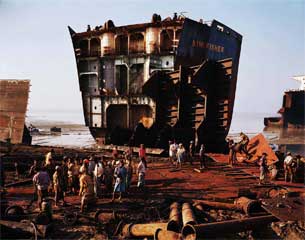
I wonder that we don’t take these ideas and stretch them out further — that is, the notion of the simple aging of everything, culturally, as being a symptom of who we are, how we treat things, what happens to us. And it’s a pattern, of course. We are, in everything — this “beautiful nightmare”, as a friend puts it — doing it on purpose. We aren’t the only ones to progressively whack away at things that are beautiful — then wonder: “what happened, there?”
What did happen there?
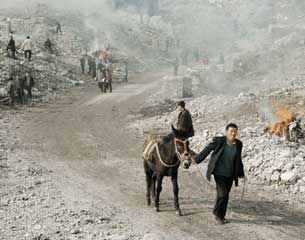
What did, then now — is happening — there??
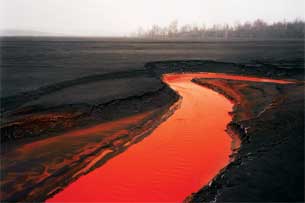
And of course, in trying to do our thing, with our lives and accumulations, we simply go there, as a team. Working and whacking away.
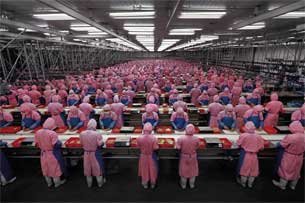
But Edward Burtynsky, the Canadian photographer,? has explored this in an entirely different manner; and it’s gutsy and courageous — nay, outrageous — to do what he’s done; and, moreover, to say what he’s said.
Which is to go out there and say — “here are some landscapes, strangely beautiful that they are — and we made them”. End of story. No tearful comment. No pointing fingers. Just being there, shooting them. And saying. Here they are.
And there they are, shown above.
I went down to the theatre, Film Forum (speaking of courageous missions!) on west Houston last night, exploring that area. It’s changed. Used to be dangerous, now it’s sleek — slick with capital. But I still loved it there. Whether slick or tricked — there’s soul and character there: w. soho/noho. Like that little espresso bar — loved that, sweet shopfront. And darn, it’s just closed for the evening. Nope, it closed 20 years ago. But it still looks like it might open up tomorrow.
Maybe that’s in line with the rest of these notations? Or am I being too optimistic?
Back to Burtynsky — the point is the beauty, found, seen, sensed and explored — and captured in large frame photographs — and in this book, this film is about his peaceful explorations of how we are doing these things. To ourselves, of course. Building these amazing statements that are remarkable virtual epitaphic installations. Here they were, what things they made, until they buried themselves. And, interestingly, they did it on purpose!
Frankly, being a human — and one capable of such things, I suppose — it’s fascinating to watch. You can hardly cast a stone — we are all part of the picture, and this is likely the angle that Burtynsky is playing. You need a new wise eye to look at the planet, and our evolutions in it, good or bad.
Watch, learn and listen. Spread the word.
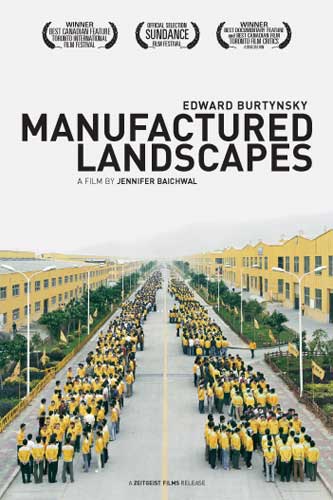
—-
Tim Girvin | nyc (95º today)